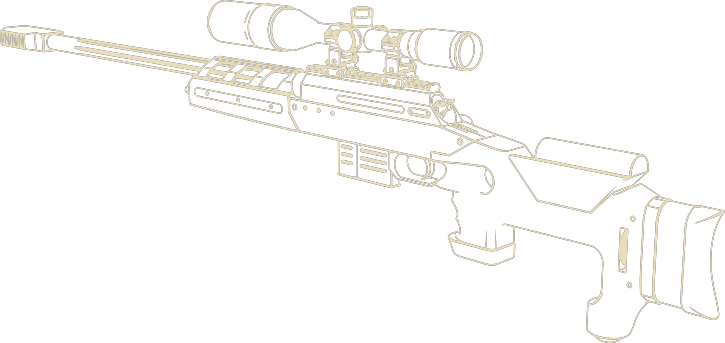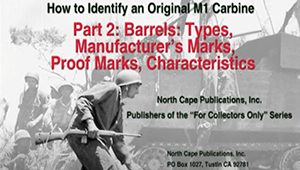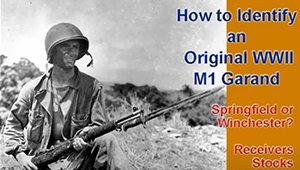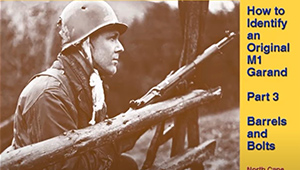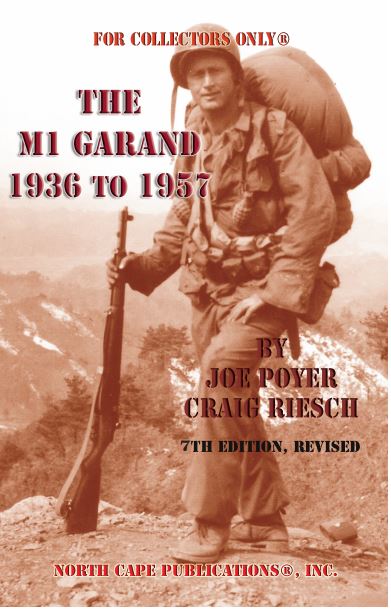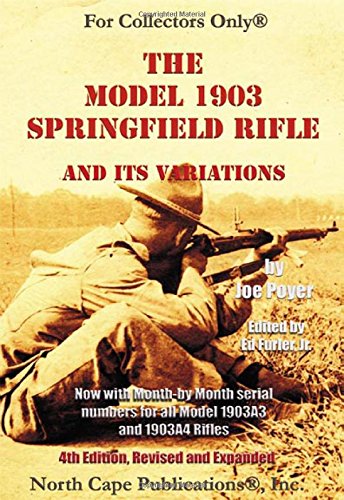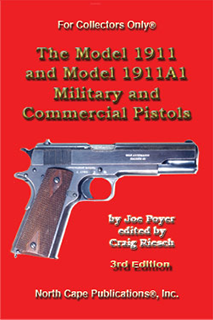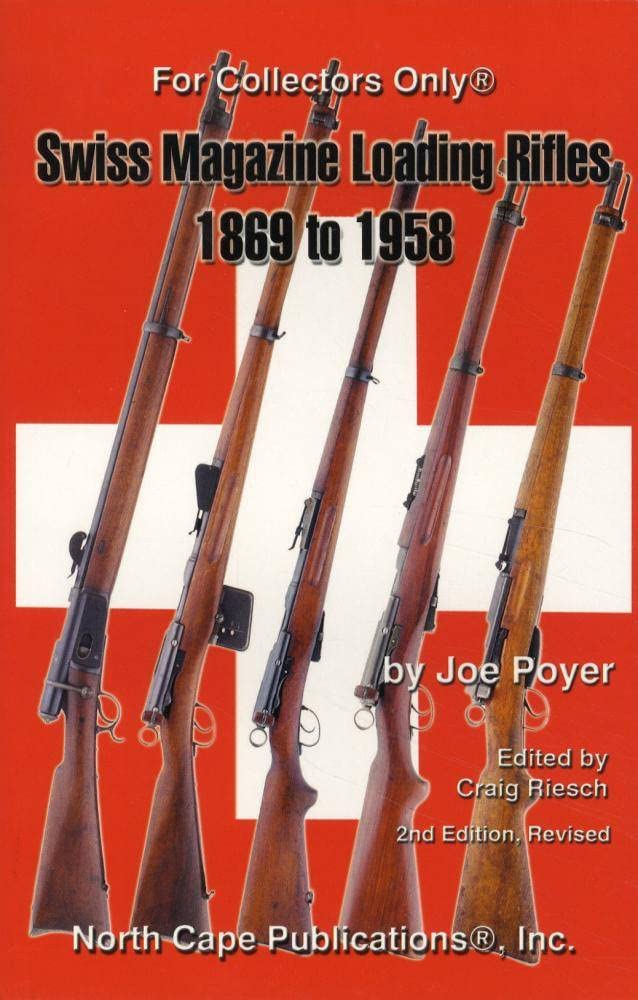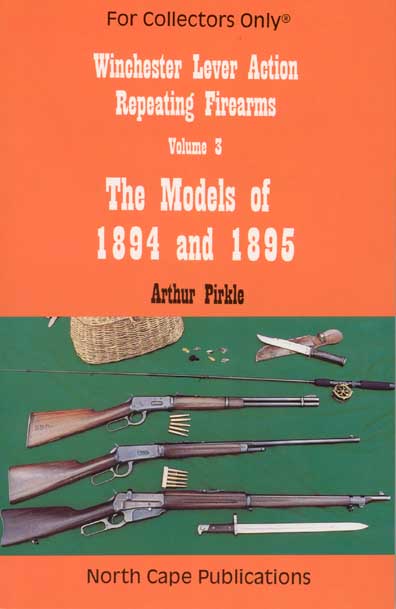North Cape Publications®, Inc.
PUBLISHERS OF FINE BOOKS FOR THE GUN COLLECTOR
Welcome to North Cape Publications®, your trusted source for original and detailed gun books focused on historic commercial and military pistols and rifles. Whether you're a seasoned collector, a restoration hobbyist, or a firearm enthusiast, our publications offer the in-depth parts diagrams, assembly instructions, and technical insights you need to preserve and understand classic firearms. With a commitment to accuracy and historical integrity, North Cape Publications helps you keep history alive.
The links below each book will take you directly to Amazon for purchase. This provides you with discounted prices and faster shipping at lower cost. You do not have to be an Amazon.com member to order. We also sell direct. Our contact info can be found at the bottom of the screen.
Videos from North Cape Publications®
How To Identify An Original M1 Carbine
Part 1: Receivers, Types, Markings, Characteristics
How To Identify An Original M1 Carbine
Part 2: Barrels: Types Manufacture's Marks, Proof Marks, Characteristics
How to Identify an Original M1 Garand Part 1
How to Identify an Original M1 Garand
Part 2: Stocks and Butt Plates
How to Identify an Original M1 Garand
Part 3: Barrels and Bolts
How to Identify an M1D Sniper Rifle
BOOKS
The authors of the books in the North Cape Publications® collection have extensive knowledge in the field of collectible firearms and have put in countless hours and even years of research into each firearm. Their work, combined with the help of many other knowledgeable and skilled professionals in the field of collectible firearms, has resulted in these fine and trusted publications. In many cases, more detailed information about each respective author can be found on the Amazon site for each book and is always included within each book itself.

British Enfield Rifles, Volume 1
The SMLE (No. 1) Rifles Mk1 and Mk III
by Charles R. Stratton
$29.95

British Enfield Rifles, Volume 2
Lee-Enfield No. 4 and No. 5 Rifles
by Charles R. Stratton
$29.95
At the start of World War II, Great Britain was badly under armed. The disastrous campaigns in France in 1940 which resulted in the massive evacuation under fire of British and Allied troops from the beaches of Dunkirk and Calais further depleted her inventory of arms. Massive shipments of military arms from the U.S. Government and sporting arms from private American citizens helped to ease the situation somewhat, but it was the amazing production program that the British had put into effect as early as September 1939 that saved the British Army. In the first few years of the war, the tired old Lee-Enfield Mk I and Mk III carried the brunt of infantry fighting. Most of these rifles had been built before 1918 and were wearing out quickly. In the 1920s, the British army had begun development of a new, easier-to-manufacture version of the bolt action Lee-Enfield. The result was the Mk V with its receiver sight and stiffer barrel. Some 20,000 were produced for trials but then the labor governments of the late 1920s and early 1930s saw no reason to continue the development of armaments. Hadn't the League of Nations promised to settle all future international disputes? But in 1939, as Hitler's Germany was crushing Poland, a crash development program was instituted to put the Mk V Enfield into production was begun to make up for lost years. By 1941, the new rifle by now rechristened the No. 4 Enfield was pouring out of factories around the country. Production was begun also in Canada and in the United States. The new rifle was equipped with an improved receiver rear sight that brought the aperture nearer the eye and improved the solider's marksmanship. The heavy nose cap was gone, replaced by a lighter band with protective ears to guard the front sight. The long Pattern 1914 bayonet had been replaced by a short spike useful for guarding prisoners and little else an implicit recognition that the static, trench-oriented warfare was gone forever, replaced by maneuver warfare spearheaded by mobile columns of armor and infantry. A new, stiffer barrel was installed to improve the rifle's accuracy. Otherwise, it remained remarkably similar to its earlier incarnations. The No. 4 Enfield was produced in a wide number of variations, most having to do with ways to cut production costs and time. The rifles poured out of the factories and were shipped to the soldiers in the front lines and training camps as fast they could be made. The No. 4 provided excellent service in the British tommy's hands from the Arctic Circle to the North African Desert to the steamy jungles of Burma. As the rifle production program began, the British Army, impressed by the havoc wrought against the Red army by Finnish snipers in the Winter War of 1939-40, also began development of a new sniper rifle. The private firearms firm of Holland and Holland, famous for the sporting rifles and shotguns, developed a sturdy mounting system for the 32 Telescopic Sight and the No. 4 Mk I (T) was born. This rifle in the hands of British snipers in the regular Army and in such special warfare units as the Secret Air Service and the Commandos, inflicted casualties and havoc on Axis troops far beyond their number. In 1944, it became clear that a smaller, lighter rifle was needed for combat in the heavy jungles of Southeast Asia. A team of Enfield engineers stripped the No. 4 rifle to its essentials, shortened the barrel and developed a flash-hider to shield the soldier from the heavy muzzle concussion and flash, and added a padded butt plate. The No. 5 rifle popularly known as the British Enfield Jungle Carbine served well during the remainder of World War II and through the communist insurgencies that plagued Southeast Asia during the early Cold War years. "The British Enfield, Vol 2., The No. 4 and 5 Rifles," continues Charles R. Stratton's excellent series on British rifles of the 20th Century. The No. 4 and No. 5 rifles are dissected wit
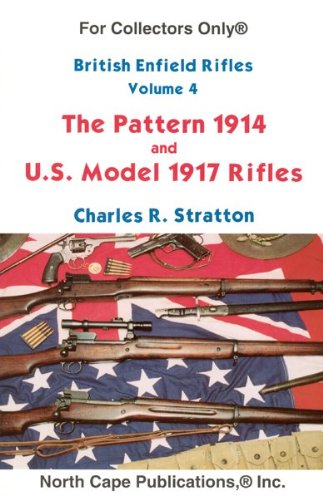
Currently Out Of Stock
Contact us to request a notification when back in stock. our contact info is below.
British Enfield Rifles, Volume 4
The Pattern 1914 and U.S. Model 1917 Rifles
by Charles R. Stratton
$29.95
Charles R. Stratton continues his very successful series on British military rifles with the little known but widely available Pattern 1914 and U.S. Model of 1917 Rifles. Often called the American Enfield, the Pattern 1914 in .303 caliber was the only British military rifle ever built wholly in the United States even though it was designed by the engineers at Enfield Arsenal, in England. The U.S. Model 1917 was the same rifle, but rechambered for the American .30-06 cartridge. Over 1.2 million Pattern 1914 rifles and 2.5 million Model 1917 rifles were built during World War I by three American companies, Winchester, Remington and Eddystone. More American soldiers, including Sergeant Alvin York, were armed with the Model 1917 Enfield than with the Model 1903 Springfield. The demand for this book has been so great that the author and publisher decided to skip over Volume 3 The Long Lee Rifle and Its Conversions for the time being. Volume 4, The Pattern 1914 and U.S. Model of 1917 Rifles is being published out of sequence to meet this demand. The Model 1917 Enfield has long been a favorite American collectible. Over the years, it has been sporterized for hunting and restored for collecting by thousands of shooters. Parts are commonly available and many P-14 parts are interchangeable with M1917 parts, making it quite easy to return a given rifle to original condition. As in the previous two volumes, Mr. Stratton has provided a detailed description of each rifle on a part-by-part basis and noted whether or not the particular part is interchangeable between the two national models. He provides a series of charts and explanations for the markings, codes and inspection stamps that appear on each part and tells how to determine which were originally manufactured for the P-14 or the M1917. He also provides a complete history of the rifle s development and use in both World War I and World War II. Also a complete description of the two sniper rifle variations of the P

Collecting the American Sniper Rifle
1900 to 1945
by Joe Poyer
$29.95
by Joe Poyer
A quick search of sites like Ebay for anything related to sniper rifles—telescopic sights, mounts, manuals, cases, etc.—illustrates the collecting "frenzy" for sniper rifles, both old and new.
Weaver telescopic sights used on the World War II-era Model 1903A4 Sniper Rifles sell for $900 to $1,500 dollars, only most of those offered for sale are fakes or are misrepresented commercial sights. The "chat rooms" are full of misinformation because there is very little reference material available.
Collecting the American Sniper Rifle, 1900 to 1945 provides accurate information that will allow the collector to determine whether or not a particular rifle or telescopic part—or other accessory—is correct.
The book provides a detailed description of...
- the sniper rifle with all parts and markings that make it uniquely a U.S. military sniper rifle.
- the telescopic sight with all parts and markings that make it uniquely a U.S. military sniper scope.
- the bases and mounts with all parts and markings that make them part of the U.S. military sniper scope assembly.
The books also contains a history of the development of each particular sniper rifle and telescopic sight. Its mounting on the rifle and sighting in are described in detail. A history of the development of the rifle leading to its use as a sniper rifle is included in an appendix, as are descriptions of British and Canadian sniper rifles that used American-produced telescopic sights.
This book covers the sniper variations of the Model 1903 Springfield:
- U.S. Model 1903 .30 Caliber Rifle with the Warner & Swasey Telescopic Sight
- U.S. Model 1903 .30 Caliber Rifle with the Winchester A5 or Lyman 5A
Telescopic Sight:
- Model 1903A1 (Sniper) U.S.M.C. Rifle with the 7.8x Unertl Telescopic Sight
- Model 1903A4 .30 Caliber (Snipers) Rifle with the Weaver M73B1 Telescopic Sight.
This book does not contain sniping techniques or tactics. Those have been well-described in other books.

Collecting the American Sniper Rifle
1945 to 2000
by Joe Poyer
$29.95
by Joe Poyer
This volume in the “Collecting the American Sniper Rifle” series includes the M1C and M1D Garand Sniper Rifles, the Winchester and Remington match rifles used as sniper rifles in Vietnam, the USMC M40 Sniper Rifle, the US Army’s M24 and XM2010 Sniper Rifles, the Special Operations Command M86 and M89 Sniper Rifles, and the T3 and M2 Carbines equipped with the T120, M1, M2 and M3 Infrared Sniperscopes.
Each sniper rifle is analyzed in depth for serial number ranges, markings, parts codes and other identifying markings. The telescopic sights, mounts, and rings are specifically identified for their military use complete with markings and where useful, serial number ranges.
You find an M1C or M1D sniper rifle at a gun show or a gun shop? How do you know that it is an original and authentic U.S. military sniper rifle. These and other U.S. military sniper rifles have been counterfeited for several decades now. Others have been built by well-meaning shooters and collectors for their own use, but over the years, and in other hands, they have become “original and authentic” sniper rifles.
M1Cs fall into a distinct range of serial numbers and their telescopic sights and mountings possess distinct characteristics. Do you know what they are?
The M1D, the most popular U.S. military snipers rifle to collect, are widely faked. Do you know how to identify a correct M1D. Producing an M1D only requires a change to the barrel and a new handguard. The mount and bracket to the telescopic sights have been widely manufactured for more than thirty years as after-market replacements. Original M84 Telescopic Sights and their mounting are identified, photographed and compared to after-market reproductions.
Telescopic sights for the M1903A4, M1C, M1D and M40 sniper rifles are now being reproduced in China for sale in the United States. None of them say “Made in China.” Often they are sold on Ebay and other auction sites, either reworked to appear original, or without stating that they are reproductions. Do you know how to tell the difference?
There are a few original USMC M40 and the M24 Sniper Rifles that have been released for sale to police departments and to civilians. But the have also been reproduced by numerous gunsmiths and small companies for the past twenty or so years. Most of the shipping boxes made it plain that these were not the real thing, but once the box is lost, or the rifle on a table at a gun show, or listed on a gun auction site, how do you tell a reproduction from the original?
Collecting the American Sniper Rifle 1945-2000, like its predecessor, Collecting the American Sniper Rifle 1900 to 1945, provides detailed descriptions and tables of identifying characteristics. If you are interested in collecting American sniper rifles, these are the books you need. They may save you hundreds of dollars and a lot of grief.
The Model 1911 and Model 1911A1
Military and Commercial Pistols
by Joe Poyer
$35.95
by Joe Poyer
A new revised and expanded edition of the Model 1911 and Model 1911A1 Military and Commercial Pistols is now available. Sixteen pages of new information regarding models, stocks, mainspring housings, magazines, markings, serial numbers, and finishes to help identify your Model 1911 or Model 1911A1 more exactly.
Nearly five years in preparation, this books examines John Browning's most famous pistol from barrel bushing to hammer to lanyard loop on a part-by-part basis.
As always in the “For Collectors Only®” series any change or variation in a part is described by serial number range, making it possible to determine the authenticity of any Model 1911 or Model 1911A1 by year of manufacture.
The Model 1911 and Model 1911A1 Military and Commercial Pistols is now 560 pages long. It includes 82 tables detailing parts and markings and 672 photos and drawings. An eight page color insert includes rarely seen examples of the Model 1911 and Model 1911A1.
Parts are described in chapters organized by assembly—receiver, slide and magazine. Each part of each assembly—trigger system, magazine release, sights, etc are then described complete with markings and other identifying characteristics. Parts are differentiated by model and manufacturer, i.e. Colt, Springfield Armory, Remington Arms-UMC, Singer, Ithaca , Remington Rand and Union Switch & Signal. All Colt model and variation parts are also described where they differ from the .45 ACP part.
All military and commercial markings are listed by date or serial number range of use. Serial numbers are listed in twenty-six individual tables both by military and the individual commercial models, and by other manufacturers. An appendix contains a serial number listing organized both by manufacturing and shipping date. Serial numbers for British military, Canadian, Argentine, Norwegian, and Russian military pistols are also given.
Individual chapters and appendices provide detailed examinations of markings on receivers, slides and barrels, including military inspection and commercial markings, and photographs of all slide markings. Finishes are discussed for both military and commercial pistols by serial number ranges. Accoutrements and accessories are thoroughly explored and photographed including all belts, magazine pockets, and holsters .
A complete listing of all U.S. military Model 1912, 1916, M3, M7, and M15 holster manufacturers is included. U.S. military-issue ammunition in .45 ACP is described in detail. A photo-illustrated assembly/disassembly procedure shows the most efficient way to service the pistol.
Our technical adviser, Karl Karash, has produced a portfolio of over 5,000 color photographs of Model 1911/1911A1 pistols, both military and commercial (see examples below). This collection is an invaluable tool for researching the M1911/M1911A1 pistol. A total of 205 pistols were photographed to show full size and in color, right and left views of each pistol from serial no. 43 to the end of U.S. military and commercial production, plus close-ups of all significant parts and markings (over 5,000 photographs in all). Each photograph can be enlarged 4 times on your computer screen without losing resolution.
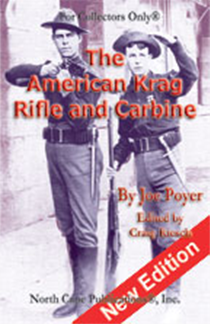
The American Krag Rifle and Carbine
by Joe Poyer
$34.95
The Krag rifle and carbine were the first smokeless powder, magazine loading arms used by the United States Army. It was adopted from a Norwegian design in 1892 and reached the troops starting in mid-1894.
The Krag was the first precision-machined, small caliber, magazine loading rifle adopted by the U.S. Army. This meant that the production facilities and work force had to be completely rebuilt and reorganized. In just four short years, the entire U.S. Army, both mounted and dismounted branches, were completely equipped with the new rifle and carbine. So successful had been the design and initial production phase, that only minor changes were made to the rifle and carbine afterward.
It was the ideal time to introduce a new rifle. The U.S. Army in the 1890s was a peacetime organization. The frontier had been settled in the late 1880s and the Army had been reduced in strength to not quite 18,000 strong, and was scattered halfway around the world from Plattsburgh, New York to Anchorage, Alaska to Honolulu, Hawaii. All but two troops of cavalry were still stationed west of the Mississippi River and no military formations in regimental strength had been assembled since the Sioux Wars in 1876-1877.
But the combination of Spanish imperialism in Cuba and the sinking of the battleship, USS Maine, led the United States into a short, sharp war in 1898 that gave way to a longer, more bitter fight in the Philippines. In 1900, Chinese revolutionaries styled the "Boxers" threatened to murder all foreigners in China. The U.S. Army and Marines brought their Krag rifles to mainland China in concert with forces from other European nations and quickly relieved the siege of the Foreign Legations at Peking and then helped clear the country of insurgents.
Even though the Krag only served the U.S. Army for eleven years, it did so admirably and saw much hard fighting. It only gave way to the Model 1903 Springfield as the latter rifle could be loaded quickly and easily with a five round clip.
The American Krag Rifle and Carbine provides the arms collector, historian and target shooter with a part-by-part analysis of what has been called the "rifle with the smoothest bolt action ever designed." Each of the fifteen models of the American Krag rifle and carbine are described in detail. All changes to all parts are described and matched to serial number ranges. A monthly serial number chart by production year has been devised that will provide the collector with the year and month in which his rifle or carbine was manufactured.
The mystery of the so-called Philippine Constabulary rifles is solved and the "School" rifle is introduced. A new and complete exploded view is included as are instructions for assembly and disassembly of the rifle and carbine.

The .45-70 Springfield
by Joe Poyer and Craig Riesch
$35.95
The Model 1903 Springfield Rifle was perhaps the most famous and popular of all U.S. military rifles. First issued in 1903, it served in two world wars and the Korean War and numerous smaller military actions around the globe between in the first half of the 20th Century. It even saw limited service during the War in Vietnam. Today, it is an extremely popular and sought-after military rifle by collectors. A modification of the famous Mauser bolt action, The Model 1903 Springfield was legendary for its accuracy in the hands of a well-trained rifleman. A variation of the rifle developed especially for match shooting held the crown in the National Matches longer than any other rifle. The National Matches have been conducted annually on a nationwide basis since 1873 except in wartime and involved both civilian and military shooters competing on an equal basis. The matches exerted a great deal of influence on the design of American military rifles and marksmanship training.
"The Model 1903 Springfield Rifle and its Variations" provides a detailed examination of this famous military rifle on a part-by-part basis. Every variation in every part is documented and matched to the serial number range of its use. Thirty-one different variations of the rifle were developed over the 41 year course of its production and all are described and identified.
Twelve different variations of the rifles were developed as sniper rifles beginning in 1907. All are discussed and described as are the telescopic sights used on each. The rifle was produced for civilian shooters by the Springfield National Armory as well. Several variations of .30 caliber rifles were developed and sold through the Director, Civilian Marksmanship Program and the National Rifle Association for target shooting and hunting. A range of .22 caliber rimfire rifles was also developed for both low cost military and civilian marksmanship training in the 1920s and 1930s.
During World War II, to meet the needs of a 12 million man military force, the Remington Arms Company and the Smith Corona Typewriter Company produced more than 1.8 million Model 1903A3 rifles including the Remington-manufactured Model 1903A4 sniper rifle.
Appendices provide additional information on serial numbers, production numbers, ammunition, inspection procedures and markings, lists of military and civilian inspectors and their markings, the National Match rifle and the rare and highly classified Pedersen device that converted this bolt action rifle to a semiautomatic rifle during World War I with never-before published original factory photos. A thorough bibliography completes the text.
"The Model 1903 Springfield Rifle and its Variations" is 456 pages long with six color plates and hundreds of black and white drawings and photos. Format is perfect bound, 8.5 x 5.5 inches. Every part is illustrated in detail either in a drawing or photo. As the book covers the entire range of the Model 1903 rifle from the rod bayonet to the M1903A4 sniper rifle. The retail price is $24.95 and as such, the book is a viable alternative to the $50 and $80 dollar books presently available on the Springfield.
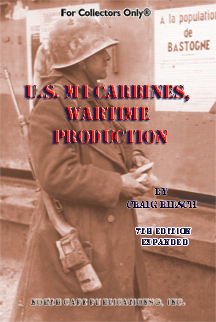
U.S. M1 Carbine, Wartime Production
by Craig Riesch
$34.95
The new 8th edition of this best-selling bible of the World War II M1 Carbine has been revised and expanded to include an entire chapter devoted to Carbine Magazines, new information in the Carbine oilers section, new sections covering the Tool Roll and Spare Parts Roll, as well as the shipping crate, and additional info on imported M1 Carbines. Additional photos and updated charts have also been added.
This book is divided into seven chapters and ten appendices. Each chapter describes a major subgroup of the M1 Carbine: receiver, barrel, trigger assembly, stock, accessories, the trench knife and bayonet, and magazines.
The author, Craig Riesch, has compiled thirty-two years of surveys and research into this 236 page volume. The book contains 43 charts, 231 photographs, and 14 drawings.
The book provides a history of the M1 Carbine's development, manufacture and use during World War II, as well as through the Korean War and the war in Vietnam. The M1 Carbine is analyzed and described by its ten manufacturers, model and serial number range. The U.S. Army Ordnance Department required that virtually every part of the M1 Carbine be marked with a manufacturer's or subcontractor's code. Riesch has unraveled the manufacturer's and subcontractor's codes by serial number range and eliminated many spurious codes. Every major and most minor part can now be conclusively identified by manufacturer and serial number range, making it possible to examine an M1 Carbine to determine its authenticity with a high degree of confidence. Using the charts and photos the collector can identify the manufacturer and period of use for the receiver group, barrel group, trigger housing group, stock group and their component parts. Butt plates by the various manufacturers are shown in full-size photographs for easy identification. All variations of the M1 Carbine are discussed M1, M1A1, M2, T2 and M3 by manufacturer. The aspects that make up the two types of true M1A1 folding stock paratrooper carbines are described and photographed. Serial number ranges for original manufacture of the M1A1 are also included. Reproduction folding stocks are shown and points of difference are identified so the collector will not be fooled by fakes.
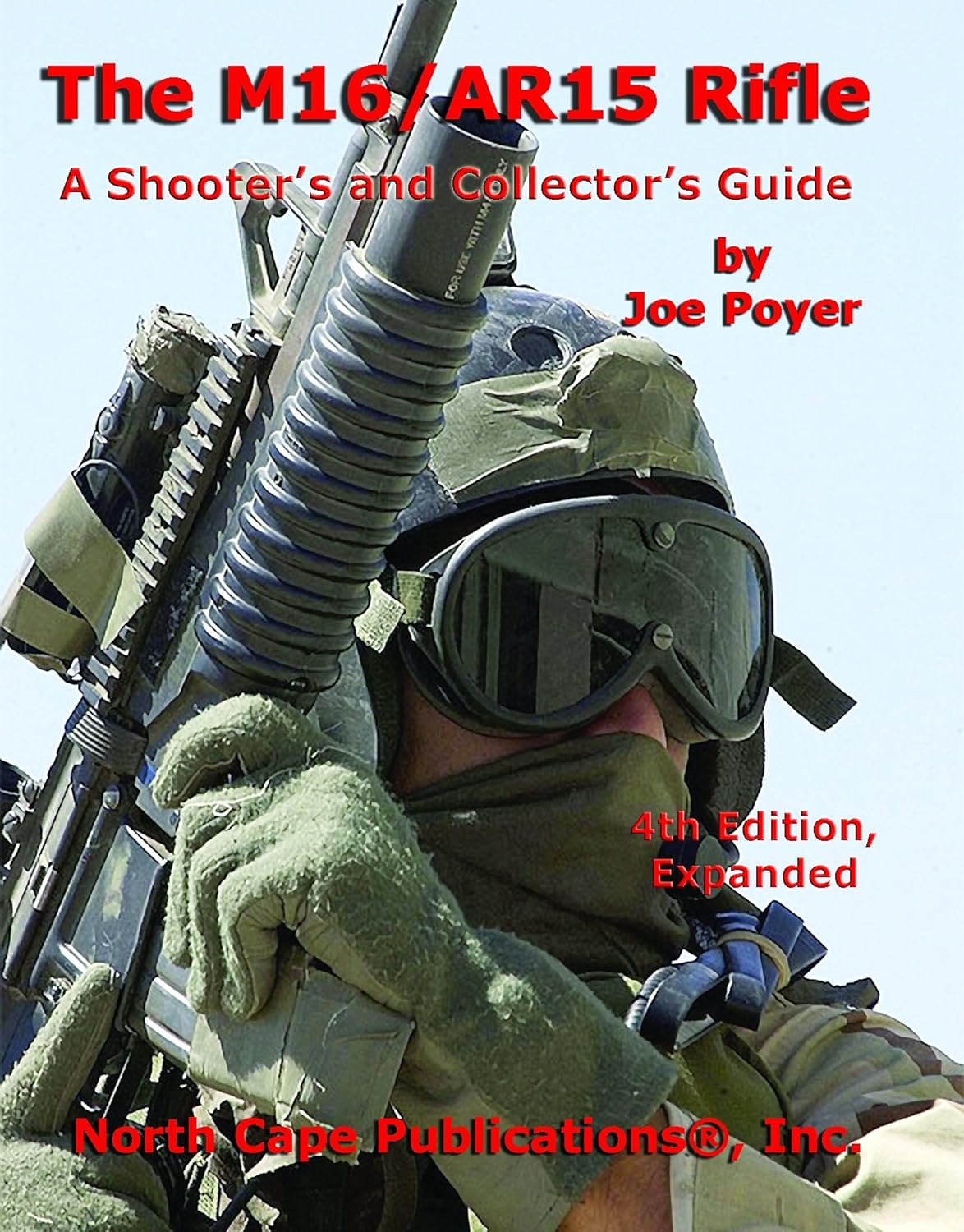
Currently Out Of Stock
Contact us to request a notification when back in stock. Our contact info is below.
The M16/AR15 Rifle
A Shooter's and Collector's Guide
by Joe Poyer
$29.95
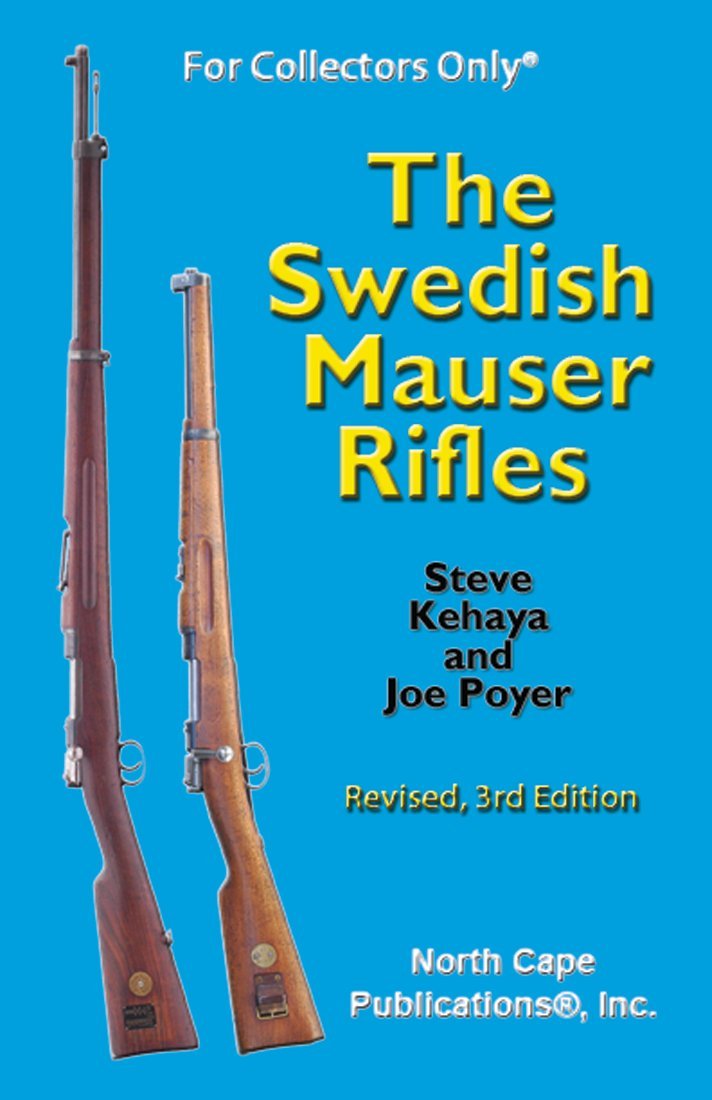
Currently Out Of Stock
Contact us to request a notification when back in stock. Our contact info is below.
The Swedish Mauser Rifles
by Steve Kehaya and Joe Poyer
$34.95
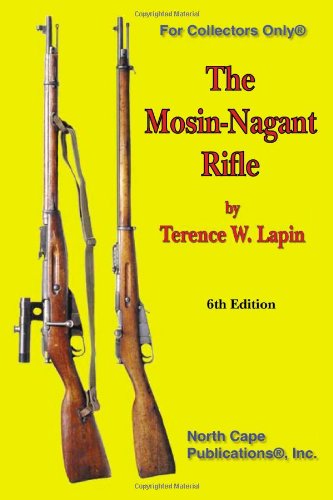
Currently Out Of Stock
Contact us to request a notification when back in stock. Our contact info is below.
The Mosin-Nagant Rifle
by Terence W. Lipin
$35.95
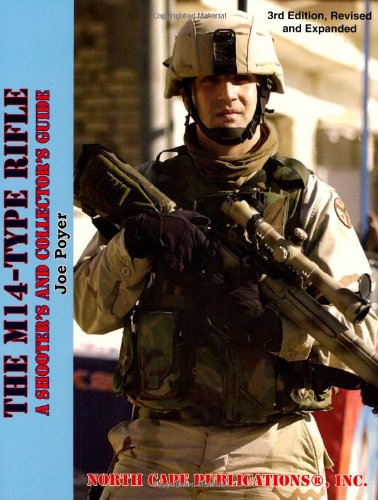
Currently Out Of Stock
Contact us to request a notification when back in stock. Our contact info is below.
The M-14 Type Rifle
A Shooter's and Collector's Guide
by Joe Poyer
$29.95
The Ml4 rifle was the last semiautomatic battle rifle adopted by the U.S. military. It lasted less than ten years before being displaced by the M16. But in that short time, it developed fierce adherents and became one of the finest match rifles in the world. During the war in Iraq, the M14, as well as its sniper variations, the M21 and M25, have made an astonishing comeback. The M14 is currently used by all four branches of the U.S. military, plus the U.S. Coast Guard. This book provides a detailed history of its development and use. The high-powered .30 caliber (7.62 x 51 NATO) cartridge is ideal for long range sniping and for penetrating body armor and light vehicles. This new revised and expanded edition examines the M14 rifle and its two sniper variations on a part-by-part basis but surveys all current civilian semiautomatic M14-type rifles and components available today. It also provides as a guide for shooters who want to restore an M14 to original condition or build a superb match rifle. Included are the Chinese variations of the M14. The history of the development and use of the M14 in Vietnam, and now in Iraq and Afghanistan, is detailed. The development of its sniper variations is explained. Separate chapters show how to turn a commercial M14-type rifle such as the M1A, into a superb match rifle by choosing the right barrel, glass-bedding the stock, and unitizing the gas cylinder. Also discussed are ammunition, National Match rifles and specification, ammunition to be used for the best accuracy, targeting and shooting the M14-type rifle and trouble shooting and maintenance. Finally, all G.I. issue accessories are described. The book is fully illustrated with photos and drawings that clarify the text. Appendices provide up-to-date information on parts and supplies and gunsmithing services. And the current legal ramifications of owning a semiautomatic rifle is explained.
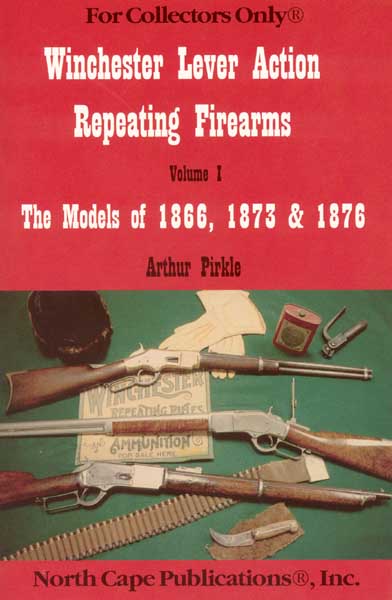
Currently Out Of Stock
Contact us to request a notification when back in stock. Our contact info is below.
Winchester Lever Action Repeating Firearms
Volume 1
The Models of 1866, 1873, and 1876
by Arthur Pirkle
$29.95
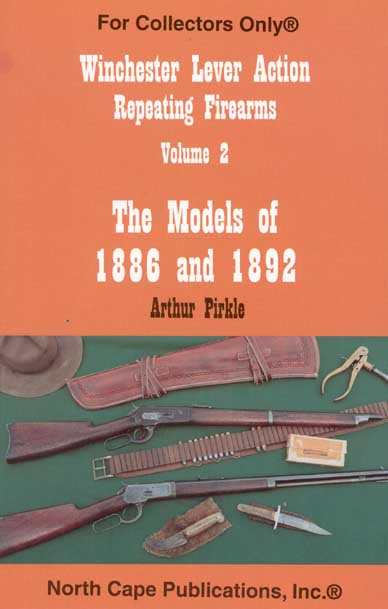
Currently Out Of Stock
Contact us to request a notification when back in stock. Our contact info is below.
Winchester Lever Action Repeating Firearms
Volume 2
Lee-Enfield No. 4 and No. 5 Rifles
by Arthur Pirkle
$29.95


